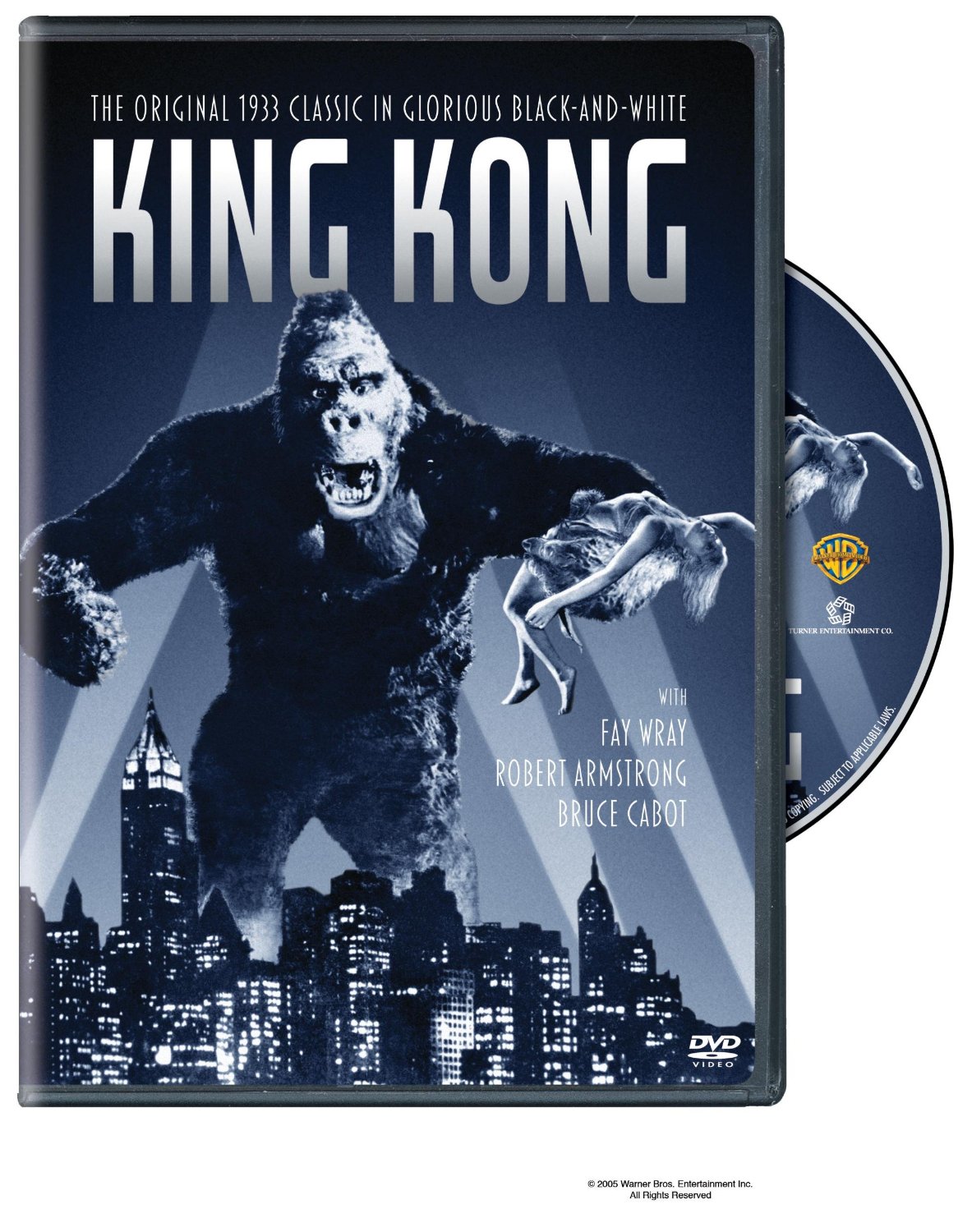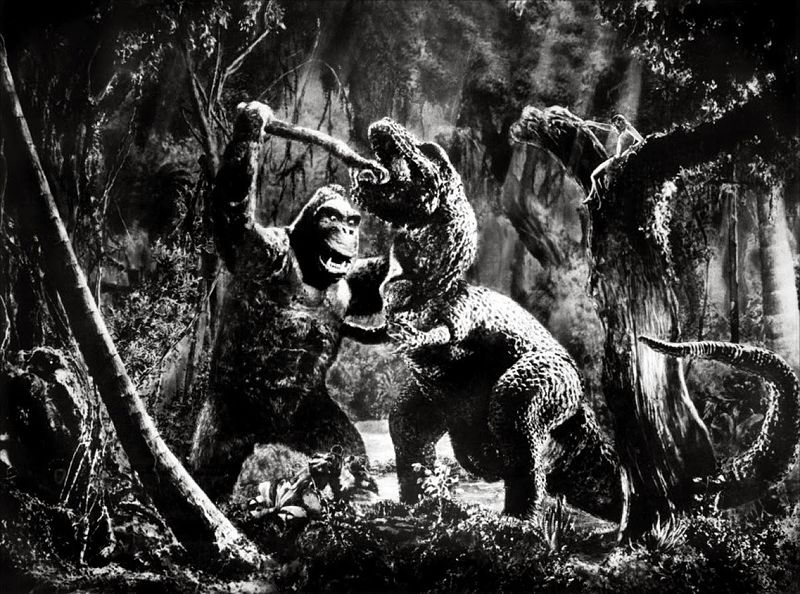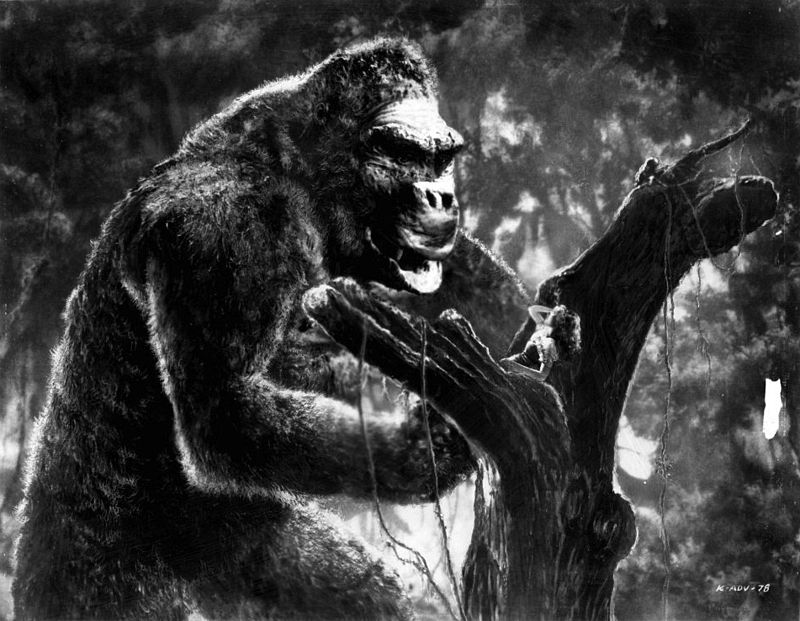King Kong (1933) starring Fay Wray, Bruce Cabot, Robert Armstrong
To be clear, this is the original King Kong movie, not the 1976 remake, or the more recent remake by Peter Jackson. Both remakes are enjoyable in their own right although I strongly prefer Jackson’s. This is the original, a movie that is still watched more than 80 years after its original release. There are good reasons for that.
![]() Something that science fiction writer and editor John Campbell said, (paraphrasing) is that people must care about the characters, robot, alien, or other, or the story falls flat. In King Kong, we care about the central characters
Something that science fiction writer and editor John Campbell said, (paraphrasing) is that people must care about the characters, robot, alien, or other, or the story falls flat. In King Kong, we care about the central characters
- The young actress (Fay Wray) that Kong kidnaps on his island home.
- The young seaman who loves her and risks all to rescue her (Bruce Cabot).
- The producer who wants to bring Kong back to civilization and make a fortune with him (Robert Armstrong, The Mad Ghoul).
- And King Kong himself, stolen from his island home, where he was happy and worshiped by the native tribesmen that he protected from the island’s dangers. And much of Kong’s appeal is due to one man, who never shows up on screen: Willis O’Brien.
In praise of Willis O’Brien
Willis O’Brien was one of the pioneers in the art of stop motion photography. He painstakingly brought Kong to life on the screen. O’Brien imbued Kong with enough character that the audience roots for the giant ape fighting prehistoric snakes and dinosaurs on his island. We feel bad for him when the crew captures him. We all grieve when authorities in New York City kill him after he escapes and causes mass damage in the strange city where he never wanted to come.
Cast of characters
- Fay Wray (The Vampire Bat) … Ann Darrow
- Robert Armstrong (The Mad Ghoul) … Carl Denham
- Bruce Cabot (Sorrowful Jones) … Jack Driscoll
- Frank Reicher (Captain America serial) … Capt. Englehorn
- Sam Hardy … Charles Weston
- Noble Johnson (Most Dangerous Game) … Native Chief
- Steve Clemente … Witch King (as Steve Clemento)
- James Flavin (Mighty Joe Young) … Second Mate Briggs
- King Kong (King Kong vs Godzilla) … The Eighth Wonder of the World
Trivia for King Kong
- The success of this film is credited for saving RKO from bankruptcy.
- Both director Merian C. Cooper and producer Ernest B. Schoedsack had been wrestlers, and they acted out the fighting moves for the battle between the T-Rex and Kong in the effects studio before the animators shot the scene.
- The character of Carl Denham was inspired by the film’s director, Merian C. Cooper.
- The whole idea allegedly originated when co-director/co-producer Merian C. Cooper had a dream about a massive gorilla attacking New York City.
- This file along with Snow White and the Seven Dwarfs (1937) and Laurel & Hardy movies were thought to be Adolf Hitler’s favorites. In his 2013 book, The Collaboration: Hollywood’s Pact With Hitler, Harvard scholar Ben Urwand documents how Georg Gyssling, the Nazi Party’s special consul assigned to monitor Hollywood films, thought this scary monster ape movie might possibly be an attack on the nerves of the German people, but there are other examples (M (1931) for instance) where Nazi leaders privately liked and consumed works of art they censored in public.
- Jean Harlow refused the lead part.
- As a child, Merian C. Cooper lived close to an elevated train which kept him awake at night when it clattered across the tracks. This was the inspiration for the scene where Kong destroys an elevated train.
- Merian C. Cooper was partially inspired by W. Douglas Burden, who brought the world’s first captive Komodo dragons to the Bronx Zoo in 1926. Cooper was intrigued how the once mythic, massive predators quickly perished once caged and displayed for the public.
Special effects
- The trees and plants in the background on the stop-motion animation sets were a combination of metal models and real plants. One day during filming, a flower on the miniature set bloomed without anyone noticing. The error in continuity was not noticed until the film was developed and shown. While Kong moved, a time-lapse effect showed the flower coming into full bloom, and an entire day of animation was lost.
- Willis H. O’Brien never liked the giant head bust of Kong, he thought it had limited dramatic possibilities.
- For the scenes of Ann in Kong’s hand, the hand was attached to a crane and raised ten feet. First a technician put her in the hand and closed the fingers around her. Then the hand was lifted for filming. She would later say her terror in those scenes was real. The more she struggled, the looser the hands grip grew. When she thought she was about to fall, she had to signal Merian C. Cooper to stop filming.
- Special effects genius Willis H. O’Brien, who earlier used stop-motion animation of dinosaur models in The Lost World (1925), had created several dinosaur models for his unfinished production Creation (1931).
- Merian C. Cooper filmed the actors, then Willis H. O’Brien projected the image one frame at a time on a screen behind the models. That’s how they filmed Kong’s removal of Ann’s clothing. The model’s movements were then matched to hers. Unfortunately, O’Brien and Cooper forgot to patent their approach, thereby losing a fortune.
- Close-ups of the pilots and gunners of the planes that attack Kong were shot in the studio with mock-up planes. The flight commander is director Merian C. Cooper and his observer is producer Ernest B. Schoedsack.




